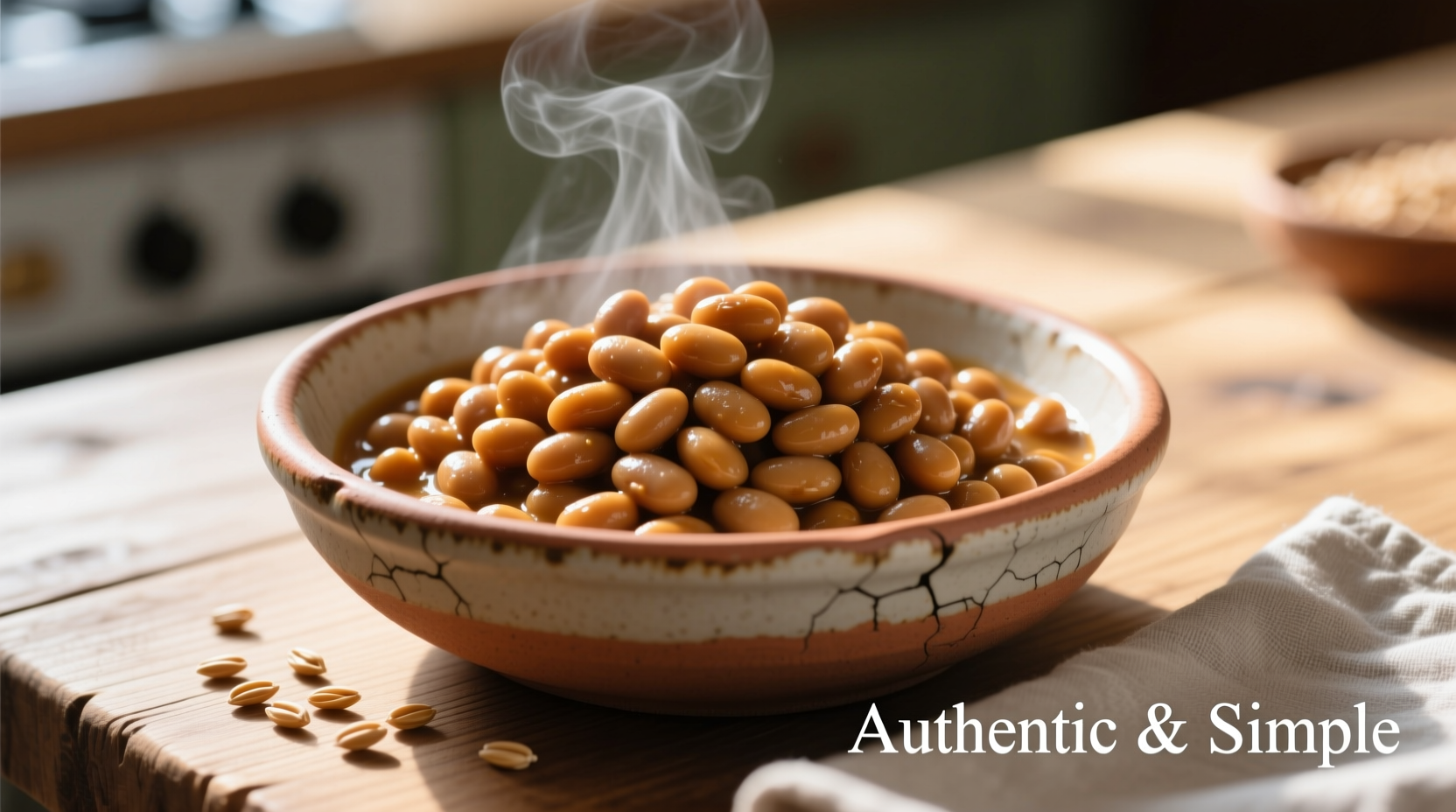Why Your Beans Turn Out Wrong (And How to Fix It)
Many home cooks struggle with beans that remain hard, split open, or turn to mush. The solution lies in understanding bean science. Beans contain pectin that breaks down during cooking, but minerals in hard water and premature salt addition can interfere with this process. According to food scientists at the University of California, Davis, adding salt too early creates a barrier that prevents water absorption, leading to uneven cooking.

The Bean Preparation Timeline: What Happens When
| Time Period | Physical Changes | Chemical Process |
|---|---|---|
| 0-2 hours soaking | Surface hydration | Water penetrates outer layer |
| 4-8 hours soaking | Bean expands 50-75% | Starches begin to soften |
| First 30 min cooking | Visible bubbling | Enzymes break down gas-causing compounds |
| Cooking completion | Skin intact, tender interior | Pectin fully broken down, starches gelatinized |
Step-by-Step Bean Cooking Process
1. Sorting and Rinsing (Non-Negotiable First Step)
Spread dried beans on a light-colored surface and remove any stones, debris, or damaged beans. Rinse thoroughly in a colander under cold running water. This simple step prevents unpleasant surprises and removes surface dust from processing.
2. Soaking Methods Compared
Choose the method that fits your schedule, but never skip hydration:
| Method | Time Required | Best For | Water Ratio |
|---|---|---|---|
| Overnight Soak | 8-12 hours | All bean varieties | 3 cups water per 1 cup beans |
| Quick Soak | 1.5 hours | When short on time | 6 cups water per 1 cup beans |
| No-Soak (Pressure Cooker) | 0 preparation | Small beans (lentils, split peas) | 2 cups water per 1 cup beans |
The USDA's Complete Guide to Dry Beans confirms that proper soaking reduces cooking time by up to 25% and improves digestibility. For the quick-soak method, bring beans and water to boil for 2 minutes, then remove from heat, cover, and let stand for 1 hour.
3. Cooking Techniques for Perfect Results
Stovetop Method (Most Control)
- Drain soaked beans and transfer to large pot
- Add fresh cold water (never hot) to cover by 2 inches
- Add aromatics (onion, garlic, bay leaf) but wait on salt
- Bring to gentle simmer (not rolling boil)
- Cook partially covered, skimming foam as needed
- After 30 minutes, add 1½ teaspoons salt per pound of beans
- Continue cooking until tender (check every 15 minutes)
Pressure Cooker Method (Fastest)
For unsoaked beans: 25-45 minutes at high pressure depending on variety. For soaked beans: 8-15 minutes. Always follow manufacturer's instructions for liquid ratios. Natural pressure release for 15 minutes prevents beans from breaking apart.
4. The Salt Timing Secret
Research published in Modernist Cuisine demonstrates that adding salt at the beginning can increase cooking time by up to 50% and cause uneven texture. The optimal approach: wait until beans are about 50% cooked (usually after 30 minutes of simmering) before adding salt. This allows proper water absorption during initial cooking while enhancing flavor development later.
Avoiding Common Bean Cooking Mistakes
Acid Addition Timing
Tomatoes, vinegar, or wine added too early prevent beans from softening properly. Add acidic ingredients only during the last 15-20 minutes of cooking. This rule applies whether using stovetop or pressure cooker methods.
Water Quality Matters
Hard water (high in calcium and magnesium) can significantly increase cooking time. If you have hard water, use filtered or bottled water for soaking and cooking. The University of Nebraska Extension recommends this adjustment for consistent results.
Don't Rush the Cooling Process
Beans continue cooking from residual heat. For perfect texture, remove from heat when slightly firmer than desired, and let sit covered for 10-15 minutes. This prevents overcooking and maintains structural integrity.
Special Considerations by Bean Type
Different beans require specific approaches:
- Lima beans: Extremely sensitive to overcooking - check every 5 minutes near end
- Black beans: Benefit from epazote (a traditional Mexican herb) added during cooking
- Chickpeas: Require longer soaking (12+ hours) for creamy texture
- Lentils: Don't require soaking but benefit from rinsing
Storage and Reheating Tips
Cooked beans keep for 5 days in the refrigerator or up to 6 months frozen. Always store beans in their cooking liquid to maintain moisture and flavor. When reheating, add a splash of water or broth to restore moisture. For best results, thaw frozen beans overnight in the refrigerator before reheating.
Troubleshooting Guide
Beans Still Hard After Hours of Cooking
This usually indicates one of three issues: old beans (over 1 year storage), hard water, or premature acid addition. Try adding ¼ teaspoon baking soda to the cooking water (only for non-pressure cooker methods) to help break down tough skins.
Beans Splitting Open During Cooking
Rapid temperature changes cause splitting. Always start beans in cold water and bring to a gentle simmer gradually. Avoid vigorous boiling, which damages bean structure.











 浙公网安备
33010002000092号
浙公网安备
33010002000092号 浙B2-20120091-4
浙B2-20120091-4